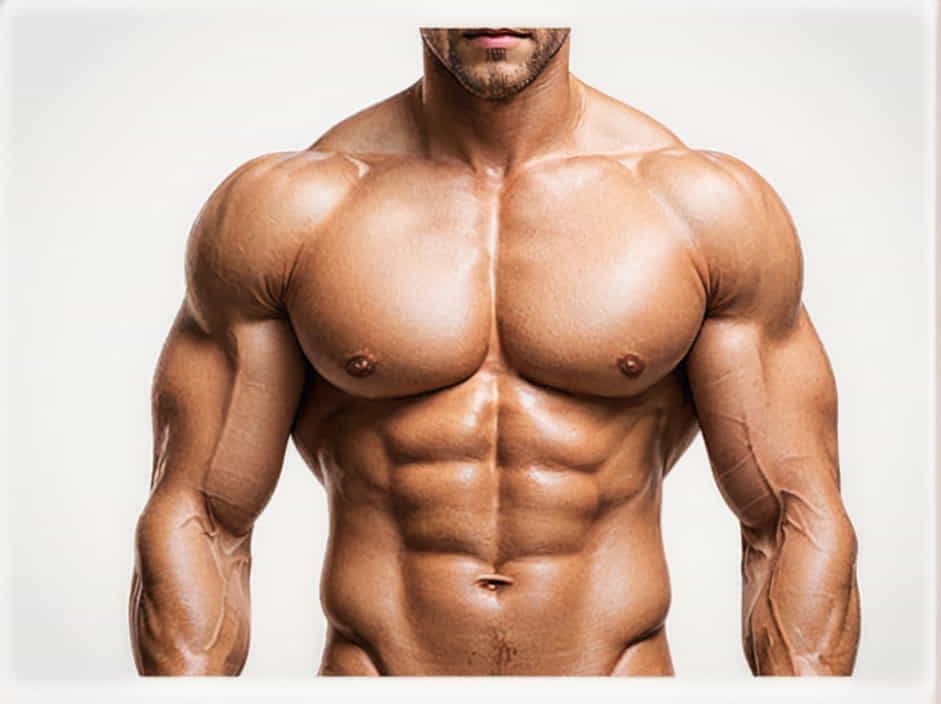The pectoral muscles are an essential part of the upper body, playing a crucial role in arm movement, posture, and overall strength. Whether you’re an athlete, a fitness enthusiast, or just curious about human anatomy, understanding the location and function of the pectoral muscles can help you improve strength, flexibility, and injury prevention.
In this topic, we’ll explore where the pectoral muscles are located, their structure, functions, and how to keep them strong and healthy.
Where Are the Pectoral Muscles Located?
The pectoral muscles, commonly known as the “pecs,” are located in the chest area. They extend from the sternum (breastbone) and clavicle (collarbone) to the humerus (upper arm bone). These muscles are responsible for various upper-body movements, including pushing, lifting, and stabilizing the shoulders.
The pectoral muscles are divided into two major muscles:
- Pectoralis Major – The larger, more visible muscle that covers most of the upper chest.
- Pectoralis Minor – A smaller, deeper muscle located beneath the pectoralis major.
Anatomy of the Pectoral Muscles
1. Pectoralis Major
The pectoralis major is the primary muscle of the chest, giving it shape and strength. It is a thick, fan-shaped muscle that extends across the chest and connects to the humerus.
Functions of the Pectoralis Major:
- Arm movement: Helps with flexion, adduction, and internal rotation of the shoulder.
- Pushing motions: Plays a key role in movements like push-ups, bench presses, and throwing.
- Chest expansion: Assists in deep breathing by expanding the rib cage.
2. Pectoralis Minor
The pectoralis minor is a thin, triangular muscle located underneath the pectoralis major. It extends from the ribs (third to fifth) to the scapula (shoulder blade).
Functions of the Pectoralis Minor:
- Shoulder stability: Helps move and stabilize the scapula.
- Breathing support: Assists in lifting the rib cage during deep inhalation.
The Role of Pectoral Muscles in Daily Activities
The pectoral muscles are involved in numerous everyday movements. Here’s how they function in different activities:
- Pushing open a door – Uses both the pectoralis major and minor.
- Lifting groceries or carrying heavy objects – Engages the chest muscles along with the shoulders.
- Throwing a ball or swinging a bat – Requires strong pectoral muscles for power.
- Maintaining posture – Helps keep the shoulders in a stable, upright position.
Exercises to Strengthen the Pectoral Muscles
To build strong and well-defined pectoral muscles, incorporating the right exercises into your fitness routine is essential. Here are some of the best workouts for targeting the pectoralis major and minor:
1. Push-Ups
One of the best bodyweight exercises for chest strength. Variations like wide-grip push-ups and diamond push-ups can target different areas of the pectoral muscles.
2. Bench Press
A classic strength training exercise that works the pectoralis major. It can be done with a barbell or dumbbells for maximum effectiveness.
3. Dumbbell Flys
This exercise stretches and strengthens the chest muscles, improving flexibility and definition.
4. Cable Crossovers
A great isolation exercise that targets the inner chest and helps build a well-defined pectoral region.
5. Chest Dips
Works the lower pectorals and strengthens the shoulders and triceps simultaneously.
Common Injuries Related to the Pectoral Muscles
Since the pectorals are heavily involved in upper-body movements, they are prone to injuries, especially in athletes and weightlifters. Some common issues include:
1. Pectoral Strain
- Occurs due to overuse or overstretching of the muscle.
- Symptoms: Pain, swelling, and difficulty moving the arm.
- Prevention: Proper warm-up and stretching before workouts.
2. Pectoral Tear
- A serious injury often caused by excessive weightlifting or sudden movements.
- Symptoms: Sharp pain, bruising, and muscle weakness.
- Treatment: Rest, physical therapy, and in severe cases, surgery.
3. Shoulder Impingement
- Can occur due to tight pectoral muscles pulling the shoulders forward, leading to discomfort and restricted movement.
- Prevention: Incorporating stretching exercises and strengthening the back muscles for balance.
Stretching and Flexibility for Healthy Pectoral Muscles
Maintaining flexibility in the pectorals is important for preventing injuries and improving posture. Here are some simple stretches to keep them loose and mobile:
1. Chest Stretch Against a Wall
- Stand next to a wall and place your hand against it.
- Gently turn your body away to feel the stretch in your chest.
- Hold for 20-30 seconds on each side.
2. Doorway Stretch
- Stand in a doorway with both hands on the frame at shoulder height.
- Step forward slightly to stretch the chest muscles.
- Hold for 30 seconds.
3. Cat-Cow Stretch
- A great stretch for the chest, shoulders, and spine.
- Helps improve flexibility and posture.
The Importance of Pectoral Muscles in Posture
Many people suffer from poor posture due to tight or weak pectoral muscles. When the chest muscles become overly tight, they pull the shoulders forward, leading to rounded shoulders and a hunched back. This can cause:
- Neck and back pain
- Reduced shoulder mobility
- Poor breathing efficiency
To improve posture, it’s essential to balance chest training with back and shoulder exercises to ensure muscle symmetry and proper alignment.
The pectoralis major and minor are vital muscles located in the chest, responsible for arm movement, stability, and strength. Whether you’re lifting, pushing, or simply maintaining good posture, these muscles play a significant role in daily activities.
By incorporating strength training, stretching, and proper posture habits, you can keep your pectoral muscles healthy, strong, and functional for a lifetime.
